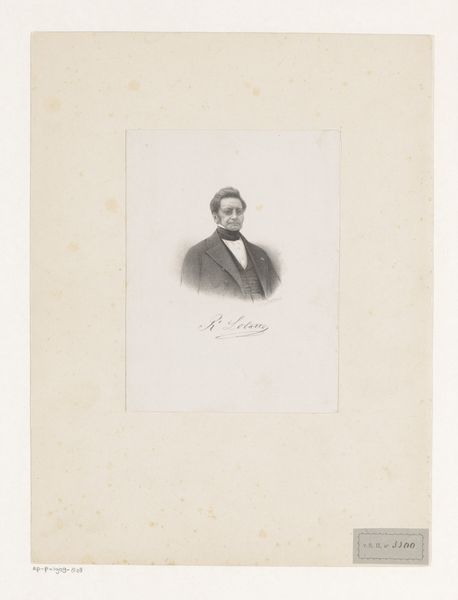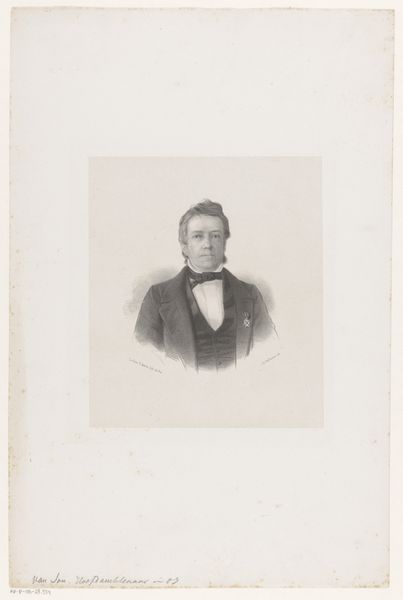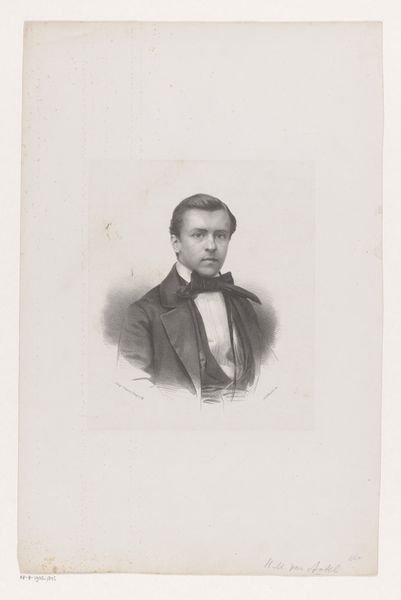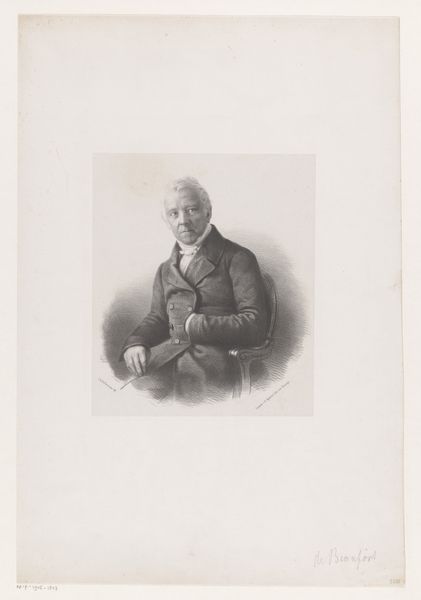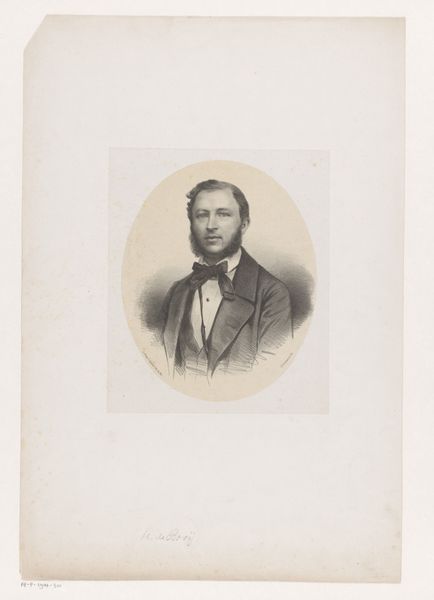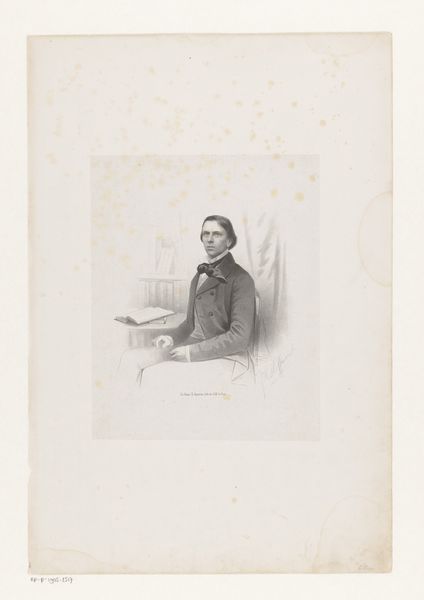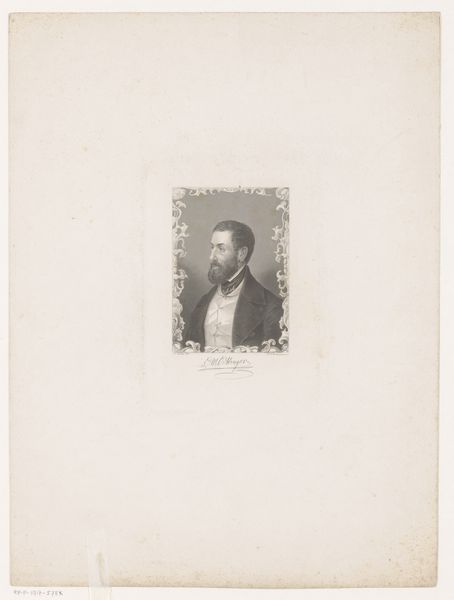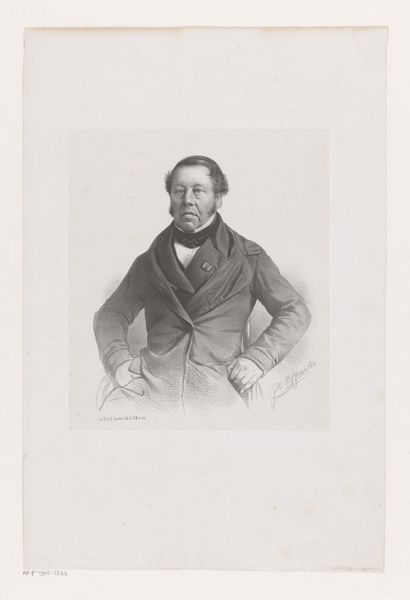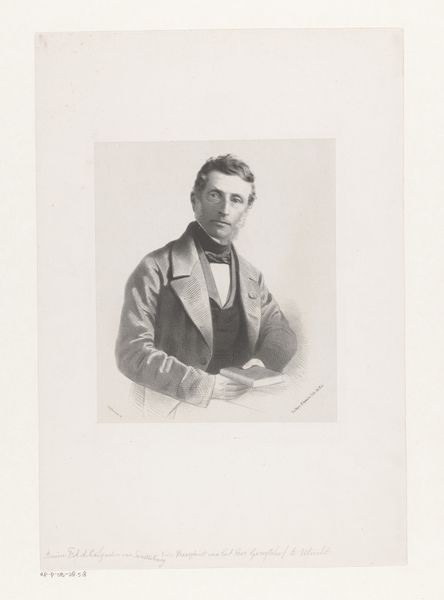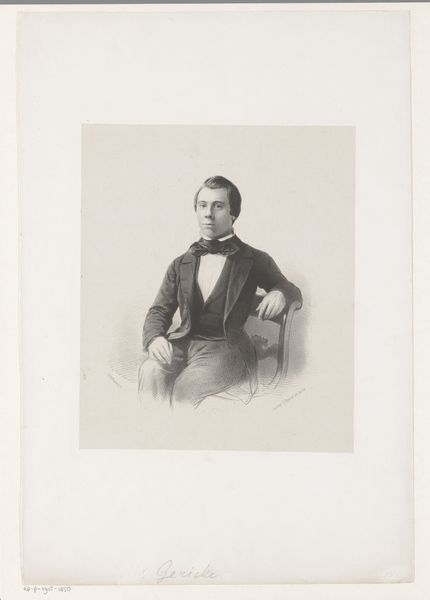
drawing, pencil
#
portrait
#
pencil drawn
#
drawing
#
16_19th-century
#
negative space
#
pencil sketch
#
pencil drawing
#
pencil
#
genre-painting
#
tonal art
#
academic-art
#
realism
Dimensions: height 500 mm, width 350 mm
Copyright: Rijks Museum: Open Domain
Curator: This pencil drawing captures Pieter Philip van Bosse. Created sometime between 1851 and 1879 by Johan Hendrik Hoffmeister, it embodies a quiet realism. Editor: It's striking how the figure emerges from all that negative space. There’s an almost photographic quality, yet the soft pencil lines evoke a very different mood, thoughtful, introspective even. Curator: Indeed. This work falls squarely into the conventions of 19th-century portraiture, which, for men, frequently meant depicting statesmen and public figures. I think, if we want to situate van Bosse properly, it is vital to know that he was an influential politician in the Netherlands, serving as Minister of Finance and playing a key role in modernizing the country’s economy and infrastructure. Editor: That certainly infuses the image with another layer. His gaze is quite direct, isn’t it? Almost challenging. It brings to mind the visual language of power, a language often used to reinforce dominant ideologies. The details of his suit, the plush chair... they are signals of wealth and status. I find myself considering what message this likeness aimed to convey to the contemporary audience. Curator: The symbols of the burgeoning bourgeoisie for sure, a man aware of the cultural and societal norms of his day. Yet there’s a tension too. It’s a drawing, not an oil painting. This suggests accessibility. Hoffmeister perhaps intended to project a relatable, down-to-earth persona alongside Van Bosse's more obvious power. Editor: Good point. It tempers the otherwise weighty presence, adding an almost casual air. So, while the work reinforces certain norms, it’s interesting to note Hoffmeister's choice of media adds another dimension. A quiet reflection of identity construction amid rapid social transformation perhaps. Curator: Yes, and by carefully reading these visual signifiers and locating them within their particular political context, we hopefully deepen our own understanding, and spark contemporary resonances and insights. Editor: Ultimately, the symbols speak even if softly; they reveal how social values manifest in art.
Comments
No comments
Be the first to comment and join the conversation on the ultimate creative platform.

